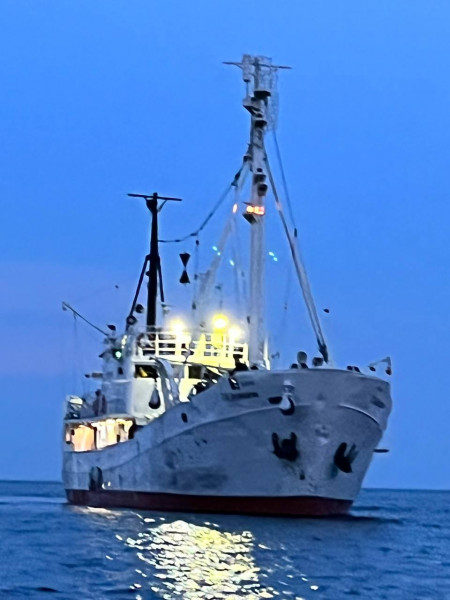Hydrophysical expedition on board the RV “G. Yu. Vereshchagin” from July 27 to August 08, 2022
From July 27 to August 08, 2022, the expeditionary works were carried out on board the RV “G.Yu. Vereshchagin” within the programmes “Investigation of the advective and turbulent water exchange of Lake Baikal and its impact on the lake ecosystem, risks of catastrophic events” (project № 0279-2021-0004) (directed by N. Granin), «From cell to ecosystem: Research of the ultrastructure of hydrobionts and their communities in the evolutionary and ecological aspect by methods of cell biology and genomics», (project № 0279-2021-0008 ) (directed by Ye. Likhoshway), and “Study of seasonal and long-term transformations of the state of water bodies and watercourses in East Siberia in the context of climate change, geological environment and anthropogenic loads” (project № 0279-2021-0005) (directed by A. Fedotov).
The aim of the expedition is to assess the impact of advective and turbulent water exchange of Lake Baikal that determine the quality of its waters.
The fieldworks were conducted in three basins of Lake Baikal, and in Barguzinsky and Chivyrkuisky Bays, and in Maloe More Strait. During the expedition, according to the standard grid of the stations of longitudinal and transverse sections of the lake, the samples were taken at fixed depths from the surface to the bottom using the Carousel SBE-32 cassette-type sampler equipped with 24 bathometers of 5-liter volume each. Water samples were taken for chemical analysis for methane content and to study the spacial distribution of dominant microalgae species throughout the Lake Baikal water area. Phytoplankton samples were collected with a Juday net. Water samples were collected at 50 stations. Hydrophysical measurements were conducted at 107 stations using a high-precision SBE-25 CTD-zond with additional sensors of dissolved oxygen, transparency, and suspended matter concentration.
The total number of samples:
- methane analysis – 565
- chemical analysis – 246
- phytoplankton – 70
With the main works along the course of the research vessel, surface temperature and electroconductivity of water were recorded; also, the gas bubble outlet was monitored using a hardware-software complex based on Furuno echo sounder with recording the data of echograms.
Experiment with autonomous free-drifting buoys Argos was carried out in the zone of the neutrino telescope near Ivanovka Settlement (106 km) and Cape Nizhnie Izgolovye of the Svyatoy Nos Peninsula. The drift trajectories were obtained with the installation of subaqueous sails of 1.5 and 3 m2 at depths of:
- 4 и 11 m in the zone of neutrino telescope;
- 100 m near Cape Nizhnie Izgolovye.
System upgrade of the data collection and storage on previously installed agrometeorological stations with a lake level gauge was done near Cape Elokhin and Khakusa Bay. Besides, underwater video recording was done with cameras attached to the Carousel SBE-32 sampler frame. The video materials of a drift were filmed in the zones of deep-water gas outlets.














